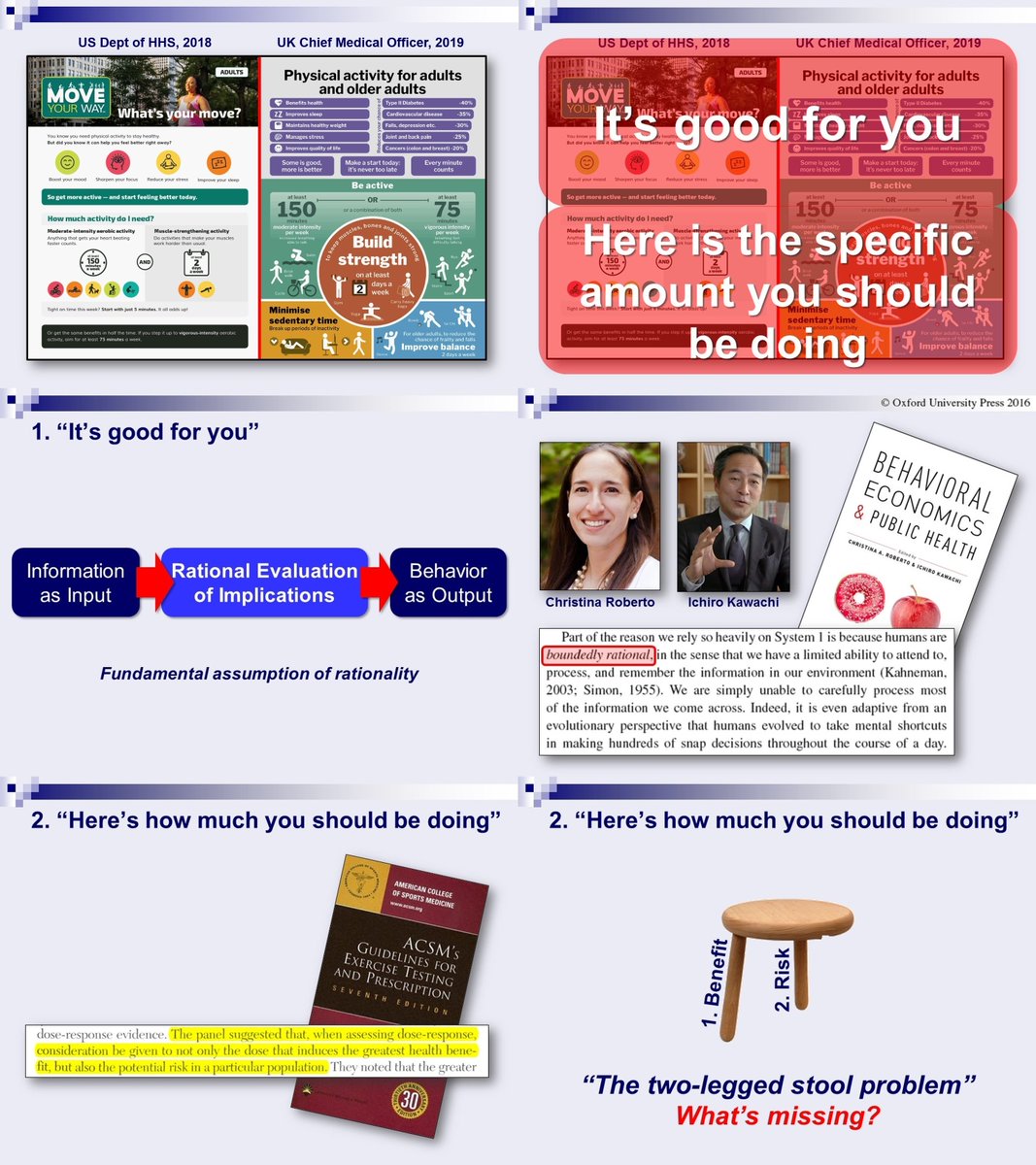
Inspired by the latest article by @GretchenReynold in @NYTHealth about how even initially reluctant adults discover how pleasant HIIT can be, I wanted to share some tips for colleagues who review related manuscripts. This is what to look for. A thread... 

The first thing to check is the participants. Look for signs that the participants were not exercise-science students of the researchers. Usually, such students already know what the researchers want to find, have seen their videos online, and their posters on the walls.
If the participants are 20-somethings, then scrutinize the characteristics of the sample. When the researchers say "recreationally active," then there is a good chance the participants were athletic. Check the VO2max, if available.
This is a trick first tried by Bartlett et al. (2011), who called their participants "recreationally active" despite a VO2max of 57 ml/kg/min, which is in the top 3% for the age-group norms. It worked for Bartlett, so the term has since been used several times. 

If the researchers say their participants were "inactive" 20-somethings, this is also a sign. College students are almost never below activity recommendations. If the participants are called "inactive" but the definition does not refer to physical inactivity, there is a problem. 

Another sign is when the researchers say that 20-somethings had max aerobic capacity that seems extremely unlikely (e.g., in the bottom 5% for the age-group norm). It's very difficult to find 20-somethings at the bottom 5% of fitness, especially if they are also low-BMI. 

In that case, check the criteria for terminating the "max" test and juxtapose them to the standard ACSM criteria. If the researchers invented their own criteria, this may provide an explanation for the improbably low "max" values used to justify the adjective "inactive." 

Next, check the intensity of the "high-intensity" intervals for the HIIT condition. This is crucial because, as the popularity of HIIT grew, the minimum threshold of intensity considered "high intensity" dropped. Now, "high intensity" is within what the ACSM considers "vigorous." 

In 2008, "high intensity" meant "all-out effort" or "an intensity close to that which elicits VO2peak (i.e., ≥ 90% of VO2peak)" 

In 2012, "high intensity" meant "∼90% of maximal heart rate," which is roughly 80% of maximal aerobic capacity. 

In 2014, "high intensity" meant "85%-90% of HRmax," which is roughly equivalent to 75%-80% of maximal aerobic capacity. 

And in 2018, "high intensity" meant "≥ 80% of maximal heart rate," which is roughly equivalent to 65-70% of maximal aerobic capacity. 

It should be clear that "high intensity" does not really mean "high intensity" per se anymore. "High intensity" has now become an alternative, "sexier" label for what guidelines for the general population refer to as "vigorous intensity" (i.e., 77-95% HRmax, 64-90% VO2max). 

Remember that, when participants do "85% to 90% of max heart rate," the intensity is just 75% to 80% of VO2max (in other words, just vigorous intensity). 

But even that's not really true. If you remember from your exercise physiology, if the duration of the interval is just 60 seconds, oxygen uptake is still rising. So, it's not even going to reach 75% VO2max. It would still be trending toward that but will still be short. 

Then, it's essential to check what the "moderate-intensity continuous" (MICT) exercise group or condition was. There are two strong signs of bias: (1) intensity close to or higher than the ventilatory/lactate threshold, and (2) longer than usual duration (e.g., 45 or 50 minutes). 

70%-75% of maximal heart rate (i.e., 55%-62% of VO2max) is picked to place MICT participants at or above the VT/LT, and thus stimulate a slow component of oxygen uptake. This will cause the intensity to rise continuously, making a 45-50 min bout very hard to finish & unpleasant. 

Never (ever!) accept overall means of heart rate or oxygen uptake over the entire bouts. These data are recorded continuously and must be reported as such. It's possible that, by the end, due to creep, the intensity of MICT was equal or higher than the intensity of HIIT intervals 

Next, and this is absolutely crucial. Check when the participants were asked to report their pleasure-displeasure. If the MICT participants were asked DURING exercise but the HIIT participants were asked AFTER the high-intensity intervals, this is the most clear sign of bias. 

As intensity rises during high-intensity intervals, pleasure declines. When intensity drops during recovery periods, pleasure increases. So, the reason why researchers ask AFTER the intervals (during recovery) is to avoid recording the lowest levels of pleasure induced by HIIT. 

Yes, the relationship between exercise intensity and pleasure-displeasure is THIS close. We showed this in this recent study: doi.org/10.1016/j.peh.… 

A proper assessment protocol of pleasure-displeasure during HIIT should capture (at least) the highest point of the peaks (i.e., the end of the recovery periods) and the lowest point of the valleys (i.e., just before the end of the high-intensity intervals).
I hope that peer reviewers will check at least these basic points next time they come across a HIIT manuscript. Raise these issues with the authors & editors. You would not be "difficult" or "hypercritical." You would be doing a service to your field and helping advance science.
• • •
Missing some Tweet in this thread? You can try to
force a refresh











